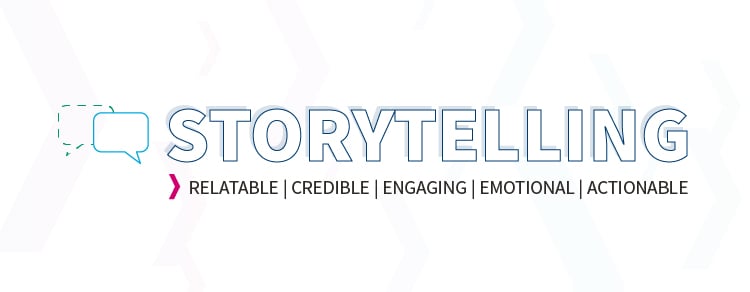Upreaching to your C-suite decision makers
December 10, 2021
By Laurel Nelson-Cucchiara and Rod Griffith
July 16, 2021

In the not-so-distant past, practically all content produced for the B2B tech industry was printed on paper and updated quarterly or yearly. Typically written by product managers and based on input from the product’s engineering team, content focused primarily on the product’s technical features and overall design excellence.
That type of content certainly resonated with the prospective customer’s engineering team, but what about their business management team?
Too often, the answer to these questions was, “Not so much.” As technology decisions shifted to the business leaders, marketers realized they needed a better way to connect with this business management audience, which required a 180-degree turn away from traditional product-centric content.
Today, the focus of content is on the customer. The modern view of B2B product content is to convey a clear understanding of the customer’s pains, problems, and requirements. After that, you can segue into how the product helps resolve problems and deliver business-changing benefits—and support this with real-world proof points.

Everyone loves a good story, where a hero overcomes obstacles to ultimately receive the desired rewards. Good content is much the same, with the “hero” being the customer and the “rewards” being the benefits delivered by the product.
To ensure your content tells a story that resonates with customers and drives them to the next step in the sales cycle, create content with the following characteristics.
When content is relatable, the reader recognizes the situation and challenges described, regardless of how they are presented. Overcoming the challenges becomes the theme of your content.
For example, you might use a retail banking customer to talk about your data security governance solutions. While other prospects might not relate to the retail banking environment, they can relate to the challenges and complexities of data security governance.

To be effective, your content must foster trust with the audience so they believe your content is true, accurate, and credible. Try the following:
When content is both useful and well-written, the audience becomes engaged and wants to read/view it to the end. Readers can easily understand and absorb it.
Engaging content often uses cliffhangers to connect with the audience and tap into their desire to know what happens next. For example, you could start by presenting a series of impossible challenges and then describe the reward received by using your product or solution.
You can also use interesting analogies from real-life users or from fictional marketing personas.

Create content that leads customers to understand that your product or solution can help them overcome their challenges and realistically reach their goals. A story about a current customer that achieved excellent results might be more effective than one about a customer who achieved incredible or unheard-of results.
Recent research has proven that emotions play a much greater role in B2B sales than was previously believed. You can generate positive emotional responses by writing good content that makes the audience feel excited, relieved, or optimistic about the future.
When comparing two prospective solutions with equal business benefits, illustrate how your solution will make the decision-maker a hero to create a positive emotional response. Don’t shy away from getting personal with your audience—make a conscious effort to reveal the personal-value benefits of choosing your solution.
Examples of personal-value benefits include:

When you create good content, your audience will consume it to the end—where they will be encouraged to take the next steps, learn more about your solution and company, or perhaps reach out to a salesperson.
Your primary goal is to help move prospective customers forward in the sales cycle—from initial information gathering all the way through purchase. Your content should be actionable both today and tomorrow and show how your solution will adapt to their changing needs as the market shifts.
When creating new content, keep these guidelines in mind to help you produce sales tools that resonate with your prospective customers and better drive desired actions.
We take pride in a team loaded with smarts, wit, and ideas. If you'd like to have a smarter, wittier inbox filled with ideas each month, subscribe here to the MarketReach Blog, and we will let you know when there is something new you might like!

Need us now? Just want to learn more? We’d love to talk.